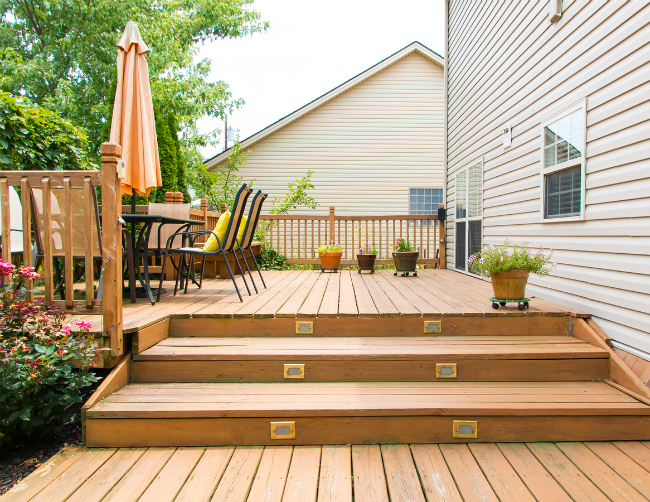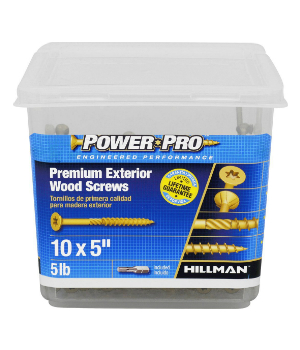Safety Check: 5 Tips to Protect Your Deck from Disaster
Extend the lifespan of your favorite outdoor feature—and ensure the safety of all those who enjoy it—by following these best practices for deck construction and maintenance.

Photo: istockphoto.com
Whether you enjoy hosting cookouts or prefer quietly relaxing on your lounge chair, you probably think of your wood deck as a place of respite. In fact, decks are so integral to outdoor living that they’re included in the plans for more than half of all new homes in some regions of the United States, such as New England and the East South Central states, according toBuilder Online. While well-constructed wooden decks can safely serve a family for 12 to 15 years before they require repair, improper building techniques can result in damage or even collapse, cutting this life span short. To get the most out of this favorite outdoor feature, homeowners should observe the following five safe building practices during the construction process—and then follow up with regular maintenance to ensure the deck remains safe and attractive for years to come.
1. Seek Approval Before Construction
While it may take only a few days to actually build a deck, give yourself a month or more to accomplish all the preliminary work, such as building code research and approvals. Most communities regulate the size, location, and even the materials used in the construction of new decks. Submit your deck plans to your local building authority, which will examine them to ensure that they meet all codes and that the location of your deck will not infringe on any easement or lot setback, both of which restrict the location of structures on your property. If your plans do not meet local codes, changes must be made to the drawings before you’ll be issued a permit. An inspection schedule, which varies by locality, will be established at the same time. Some inspectors may want to check in to ensure that your post holes are below the frost line (the depth to which the soil freezes in your area), observe the method you used to attach the deck to your house, and/or approve the dimensional lumber used to frame the deck joist system. Some building authorities follow strict inspection schedules, while others are more lax.
Once your deck plans receive a green light from the city, call 811 to let utility companies know you’re going to be digging. They’ll send out representatives to mark the ground where their lines are buried so you don’t run into any surprises when you start construction. If you plan to hire a professional to build your deck, your contractor will typically perform the vital steps of contacting both your local building authority and the local utility companies.
2. Know the Importance of Firm Footings
Your deck will only be as sound as the foundation on which it is built. For most decks, construction involves a pier system that requires digging holes below the frost line and pouring concrete piers to support deck posts. Digging holes too shallow and not quite below the frost line—a common mistake—can result in pier movement due to frost heave. Frost heave occurs when moisture in the ground expands as it freezes, causing the soil to swell and shift, which can wreak havoc on shallow deck posts.
Protecting the support posts themselves also preserves the long-term integrity of the deck. Posts are less likely to break down and rot when the base of each one is first encased in a galvanized post base and then securely anchored to the pier (as opposed to permitting the treated wood post to be in direct contact with the concrete). Even treated wood will eventually rot.

Photo: hillmangroup.com
3. Swap Nails for Screws
For decades, nails were the fastener of choice when it came to constructing decks—until incidences of deck collapse attributed to nails that became loose over time led to a shift in standards. Today, screws replace nails wherever they were once used (such as when fastening joists to a rim joist or installing joist hangers) because their threads grip the wood better. The result? A more structurally sound deck with less of a tendency to work loose.
Notallscrews are suitable for exterior use, however. You need to choose a metal that not only resists rusting when exposed to the elements but also will not react to the chemicals present in treated wood—assuming that the deck is being built with treated lumber.Hillman’s Power Pro line of premium exterior screwssolves both predicaments with its two options: The stainless steel (for use with cedar, redwood, marine applications and projects within 5 miles of coastal waters) and organic bronze epoxy–coated (for use on treated lumber decks) fasteners come guaranteed not to rust or corrode for the life of your deck. To boot, these Power-Pro exterior screws are designed to make construction even easier. Unique thread design and strong self-drilling tip provide 20 percent faster engagement into wood eliminating the need to pre-drill holes before installing screws. Plus, because the engineered design starts fast and reduces the amount of drive torque needed to install the screws, you can squeeze in more work before it’s time to recharge the power drill/driver’s battery.
4.投资于一个稳定、安全的甲板栏杆
Your deck’s railing isno偷工减料的地方。国际Residential Code (IRC) requires guardrails for all decks that are higher than 30 inches above the ground. Minimum rail height is 36 inches, but you can construct a taller rail as long as it meets certain requirements. Among other concerns, the space between individual balusters (the vertical posts or pickets below the handrail) needs to be less than four inches in order to prevent infants and toddlers from slipping through. As well, while railing designs differ, the distance between a horizontal bottom rail and the top of the deck surface shouldalsonot span more than four inches. Many inspectors carry a four-inch ball just to test these spaces. Finally, for user safety, the railing should be able to withstand 200 pounds of lateral pressure (force from either side) anywhere along the top rail.
5. Prolong a Deck’s Life Span with a Maintenance Plan
All wood, even treated wood, moves when repeatedly exposed to humidity and temperature fluctuations. Because decking boards take a direct hit from rain, snow, and scorching sun all year long, they often show damage before any other deck component. Keep your boards in tip-top shape by adopting an annual three-part deck maintenance plan: Inspect for loose decking boards, clean thoroughly with a mild commercial deck-cleaning product, and then seal the surface. (A trifecta sealing product will repel water, include a mildewcide, and protect the deck from harsh UV rays.)
Addressing individual small repairs sooner rather than later can prevent problems from snowballing. Plus, when caught early, most fixes require little effort! For example, you can usually secure a loose deck board simply by screwing the board into the joist system below.Hillman Group’s Power Pro Premium Exterior Wood screws—either stainless steel or bronze epoxy–coated, depending on your lumber—feature countersinking blades that enable them to recess quickly below the surface of the decking so they won’t pose a hazard to bare feet. These fasteners also won’t draw any attention to your repair work, so your deck’s secret to looking as good as it did the day it was built remains safe for another summer.
Beyond your routine checkups, it’s not a bad idea to have a professional inspect the entire deck every few years to rule out structural issues that may not be apparent to the average homeowner. If you’ve followed the best practices outlined above, you’re probably in the clear, but the confirmation of a pro will certainly put your mind at ease.
这s content has been brought to you by Hillman Group. Its facts and opinions are those of BobVila.com.






